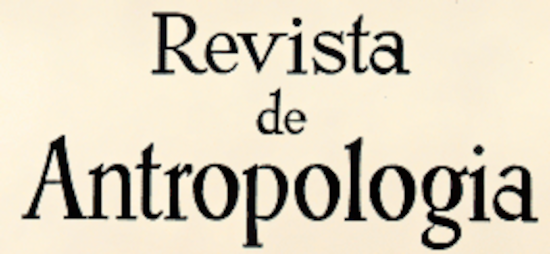Abstract
What historical world is (re)elaborated by the indigenous cinematography in opposition to the visual regimes that constitute the coloniality of the gaze toward the First Nations Peoples of Abya Yala? The article analyzes the imagistic (de)construction of the Other, starting from post-colonial, anthropological, and film studies perspectives. It focuses on the visual forms of the cinematographic, photographic and iconography, as construed by the cinema of First Nations Peoples, through the process of historical-formal reversal, giving rise to other historical variables. As conclusion, it points out that indigenous cinema presents itself in opposition to the cinematographic, anthropometric perspectives of painting, photography, and ethnographic film, with mechanisms of counter-coloniality. Such a mechanism can be identified in the works of Vincent Carelli, Ana Vaz and Paloma Rocha, and Luis Abramo, Takumã Kuikuro (Upper Xingu), Luis Tróchez Tunubalá (Misak), Francisco Huichaqueo (Mapuche), Álvaro and Diego Sarmiento (Quechua) and the Guajajara Collective (Jocy and Milson).
Keywords
Indigenous cinema; Coloniality of the gaze; First Nations Peoples; Visual regimes; Anthropometric portraits

 Thumbnail
Thumbnail
 Thumbnail
Thumbnail
 Thumbnail
Thumbnail
 Thumbnail
Thumbnail
 Thumbnail
Thumbnail
 Thumbnail
Thumbnail
 Thumbnail
Thumbnail
 Thumbnail
Thumbnail
 Thumbnail
Thumbnail
 Thumbnail
Thumbnail
 Fonte: Ronuro, selvas do Xingu (1924) | © Luiz Thomaz Reis
Fonte: Ronuro, selvas do Xingu (1924) | © Luiz Thomaz Reis Fonte: Ronuro, selvas do Xingu (1924) | © Luiz Thomaz Reis
Fonte: Ronuro, selvas do Xingu (1924) | © Luiz Thomaz Reis
 Dióscoro Teófilo De la Puebla y Tolín. 1862. Primer desembarco de Cristóbal Colón en América. Óleo sobre tela, 330 cm X 545 cm. Acervo Museo del Prado, Espanha.
Dióscoro Teófilo De la Puebla y Tolín. 1862. Primer desembarco de Cristóbal Colón en América. Óleo sobre tela, 330 cm X 545 cm. Acervo Museo del Prado, Espanha. Jean Leon Gerome Ferris. 1912. The First Thanksgiving 1621. Óleo sobre tela.
Jean Leon Gerome Ferris. 1912. The First Thanksgiving 1621. Óleo sobre tela. Pedro Pereira. 1999. A invasão portuguesa. Acrílica sobre tela com aplicação de materiais. 160 cm x 145 cm. Acervo FUNCARTE
Pedro Pereira. 1999. A invasão portuguesa. Acrílica sobre tela com aplicação de materiais. 160 cm x 145 cm. Acervo FUNCARTE
 Fonte: Koch-Grünberg, 1923 - Acervo Arquivo Nacional.
Fonte: Koch-Grünberg, 1923 - Acervo Arquivo Nacional. Fonte: Koch-Grünberg, 1923 - Acervo Arquivo Nacional.
Fonte: Koch-Grünberg, 1923 - Acervo Arquivo Nacional. © MARC FERREZ, Índios Bororo, c.1880 - Acervo Instituto Moreira Salles.
© MARC FERREZ, Índios Bororo, c.1880 - Acervo Instituto Moreira Salles. © MARC FERREZ, Índios Bororo, c.1880 - Acervo Instituto Moreira Salles.
© MARC FERREZ, Índios Bororo, c.1880 - Acervo Instituto Moreira Salles. © E. THIESSON, 1844 - Casal Botocudo
© E. THIESSON, 1844 - Casal Botocudo
 © Denilson Baniwa
© Denilson Baniwa
 Fotografías de fueguinos y mapuche en el Jardin d’Acclimatation de París, siglo XIX.
Fotografías de fueguinos y mapuche en el Jardin d’Acclimatation de París, siglo XIX. Fotografías de fueguinos y mapuche en el Jardin d’Acclimatation de París, siglo XIX.
Fotografías de fueguinos y mapuche en el Jardin d’Acclimatation de París, siglo XIX. Cenas de Kalül Trawün - Reunión del cuerpo (2012) | © Francisco Huichaqueo
Cenas de Kalül Trawün - Reunión del cuerpo (2012) | © Francisco Huichaqueo